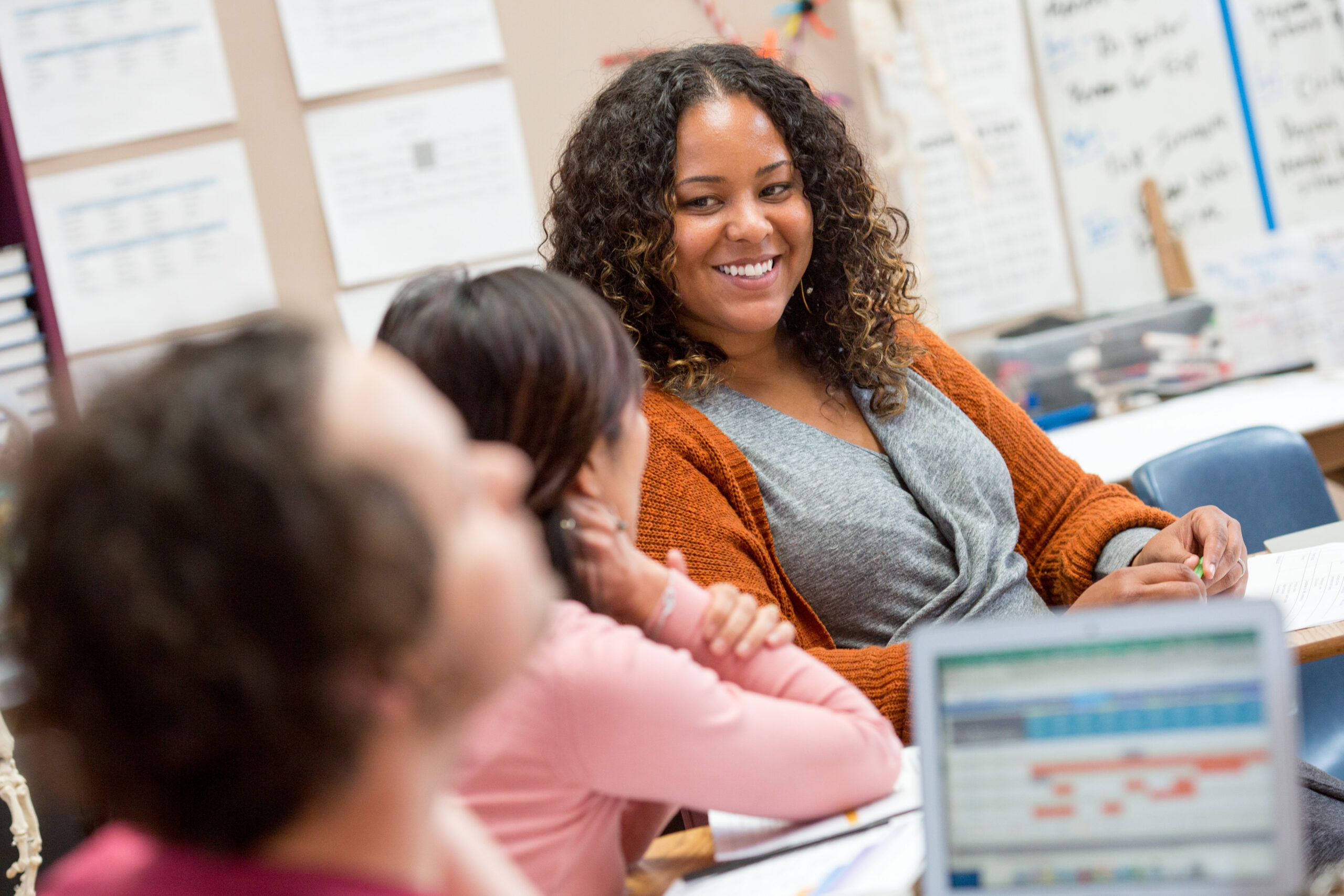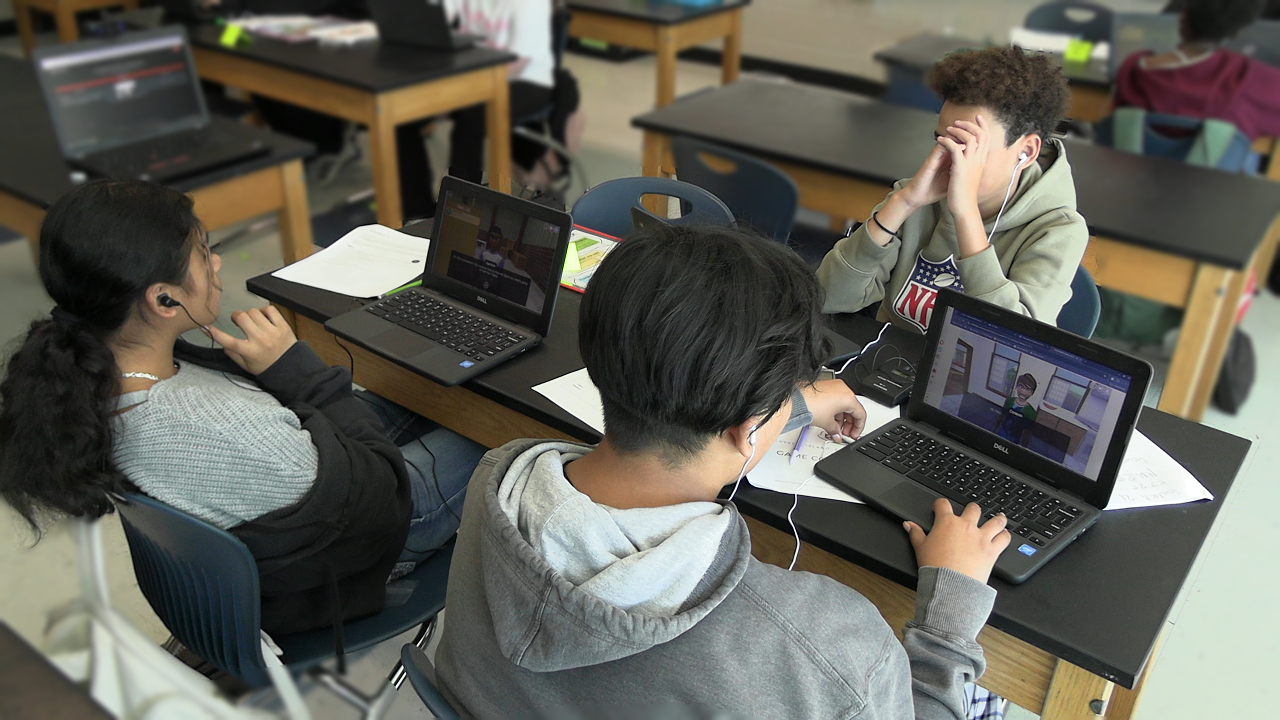FIZZ: Teaching Through Technology
March 5, 2009 – Ask any child between the ages of 5 and 18 what they like to do in their spare time. In the past, answers would probably include going to soccer practice or piano lessons. Today, most kids would say, “Playing video games” or “Watching videos on YouTube and looking at my friends’ profiles on Facebook.”
It’s just a different world we’re living in. Online media and social networking Web sites are more popular than ever with this younger generation. Most can’t even remember not being able to check e-mail or post pictures on their MySpace pages.
With all this interest in Web 2.0 – such as blogs, networking sites and Twitter – it is no surprise that many teachers are wondering, “How do I use this in the classroom?”
“There have been discussions about this for years now. A group of teachers and administrators sit around and talk about how to use these digital tools as a teaching device, but most get so frustrated with its limitations, such as lack of security and ample inappropriate content, that they end up tabling the discussion…over and over,” says Dr. Lodge McCammon, specialist of curriculum and contemporary media at NC State.
McCammon and his counterparts at the Friday Institute for Educational Innovation have worked hard to come up with a solution to this 21st century conundrum. They call it FIZZ.
FIZZ – which is being used in 35 K-12 schools over seven North Carolina counties – allows teachers to implement safe Web 2.0 environments in the classroom, giving them a private YouTube-like site for each school. Through the FIZZ Web site, teaching and learning outcomes can be easily broadcast over the Internet to increase student engagement and achievement, while still allowing school administrators to control the Web site’s content.
 “Teachers can film students in the classroom reciting poetry or they can work on a music video teaching a physics concept, and put it on the school’s private FIZZ site where students can go look at it from home – and show their classmates and family,” McCammon says. “People love looking at themselves in pictures and on film. With FIZZ, students go home and watch these educational videos of themselves, their teachers and friends over and over, therefore reinforcing educational material in a way that engages them.”
“Teachers can film students in the classroom reciting poetry or they can work on a music video teaching a physics concept, and put it on the school’s private FIZZ site where students can go look at it from home – and show their classmates and family,” McCammon says. “People love looking at themselves in pictures and on film. With FIZZ, students go home and watch these educational videos of themselves, their teachers and friends over and over, therefore reinforcing educational material in a way that engages them.”
Jamie Hall, a math and science teacher at Centennial Campus Middle School, has seen the impact on his students.
“My students really enjoy using FIZZ and being able to make their own videos and work with classmates to make videos for our school’s FIZZ site,” says Hall. “Parents enjoy it too. It gives them a window into their child’s world – they get to see what their kids work on at school, and their kids are proud to show it to them.”
Helping students solve math problems or learn Civil War facts is obviously an important part of this program, explains McCammon. But there’s another lasting component – teaching students appropriate ways to use Web tools.
“Students are getting mixed messages about how to use sites like Facebook and YouTube. At their schools, these sites are banned, giving students the impression that the sites are inappropriate,” McCammon says. “But then they go home and their parents tell them they can use the sites, but maybe for only 30 minutes a day. No one is really giving them guidance on how to use these tools in an appropriate manner. They don’t fully realize that once they put content online, it is out there forever and they can’t take it back.”
And it’s not just a problem with the younger generation. With the host of new digital tools readily available for people to keep in touch with friends – and meet new ones – there has been increased scrutiny over what is, and is not, appropriate for online sharing. There have even been cases of teachers getting fired for writing inappropriate comments about their students on MySpace and office workers getting reprimanded after their employers have found inappropriate pictures of them online.
McCammon hopes using FIZZ will teach children how to use Web 2.0 tools in a productive and appropriate manner.
“Facebook and YouTube aren’t going away. If anything, more and more sites like these will be popping up,” says McCammon. “If we can work with students, at a young age, to teach them how to use these great, informational tools in an appropriate way, then we’re doing an even better job of preparing them for living and working in the 21st century.”
- Categories:



